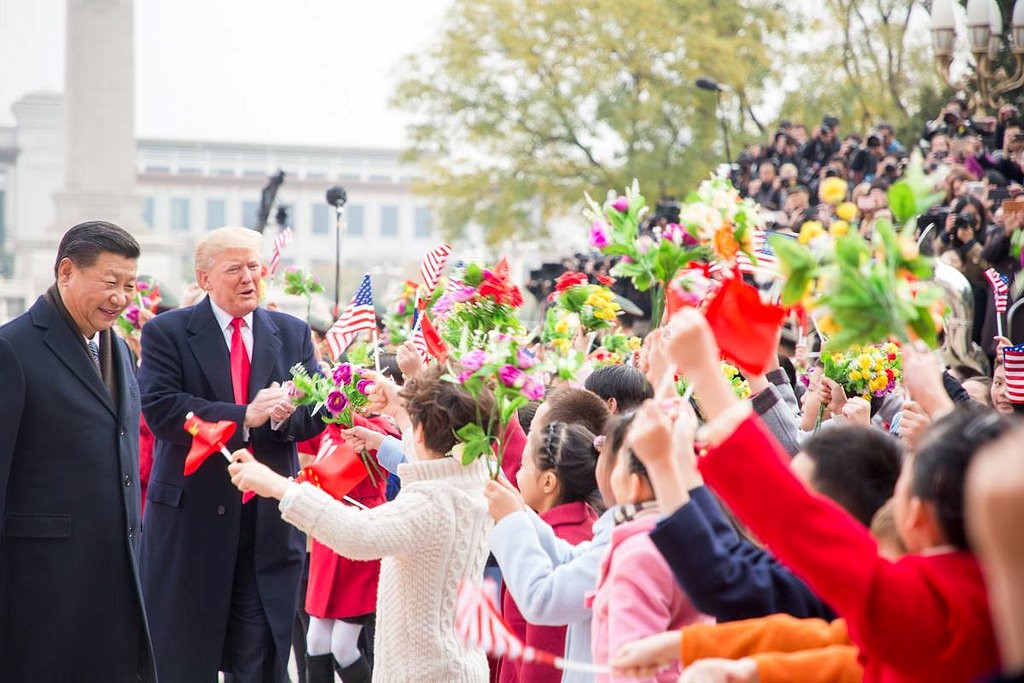
Defense authorization bill prohibits government from using certain ZTE products.
President Trump took a break from tweeting about his former reality show costar-turned rogue White House aide on Monday to officially sign the $716 billion defense policy act, which is designed to “counter Chinese aggression and support U.S. military servicemen and women.”
Much of the coverage of the bill’s signing centered around Trump failing to mention Sen. John McCain in his remarks, noteworthy because the legislation is named after the Arizona Republican. But the measure itself proved less controversial, receiving widespread bipartisan support for shifting “U.S. focus away from counter-terrorism to the strategic threats posed by China and Russia.”
Also included in the bill is the conclusion of the latest chapter of the ZTE saga.
You remember ZTE! It’s the Chinese telecommunications firm that is considered a major security threat to the United States. On top of that, ZTE also violated trade sanctions on Iran and North Korea.
When ZTE failed to discipline employees who violated said sanctions, the Commerce Department rightly barred ZTE from importing any U.S. components for seven years, which effectively put the company out of business.
Not surprisingly, China got real mad about all this.
But then surprisingly, Trump shocked a whole lot of people by tweeting that he instructed Commerce to “give massive Chinese phone company, ZTE a way to get back into business, fast.”
President Xi of China, and I, are working together to give massive Chinese phone company, ZTE, a way to get back into business, fast. Too many jobs in China lost. Commerce Department has been instructed to get it done!
— Donald J. Trump (@realDonaldTrump) May 13, 2018
(Editor’s note: I know this tweet is, like, not even close to the craziest thing Trump’s ever tweeted, but the fact that Trump, who spends so much time talking about reworking China trade, complained about jobs in China being lost is still stunning.)
Anyway, back to the story. Commerce obliged, hitting ZTE with a $1 billion fine (and another $400 million held in escrow) and some additional compliance measures. But ZTE effectively was back in business, and that didn’t sit well with a lot of folks in Congress.
When the Senate passed their version of the defense bill, it included an amendment to reverse the settlement and ban ZTE from conducting business in the United States — creating a standoff between the White House and Capitol Hill.
So how did this all end?
ZTE got banned! Kinda sorta.
In the final legislation signed by Trump on Monday, the U.S. government and government contractors are officially banned from using most of the technology produced by ZTE and another controversial Chinese company, Huawei. Not all ZTE and Huawei gear is off-limits, just anything considered “essential” or “critical,” and the ban goes into effect gradually over two years.
Not surprisingly, Huawei wasn’t pleased, calling the ban “a ‘random addition’ to the defense bill that was ‘ineffective, misguided, and unconstitutional.’” But frankly, this a move that’s long overdue — the FBI, CIA and NSA all have agreed that Huawei and ZTE technology poses big security threats.
But ZTE is still in business, and China is only intensifying its surveillance efforts — here’s another egregious example of that.
We’d guess that this isn’t the last time we’ll hear about ZTE.
